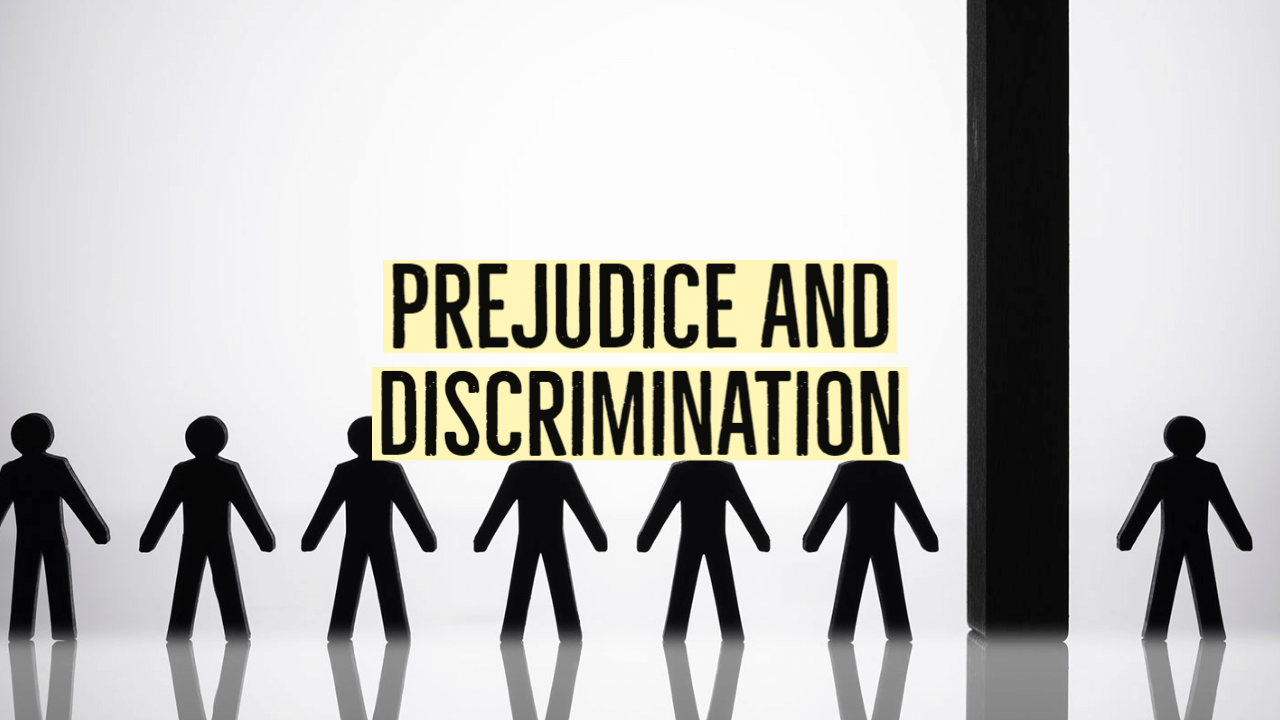(Part - 1) - Attitude and Social Cognition Class 12 Psychology
Explaining Social Behaviour
- Social Behaviour is a topic covered in Class 12 Psychology that focuses on the way people interact with one another in society. It explores the factors that influence human behaviour in social settings and how individuals respond to various social stimuli.

- The topic covers a wide range of areas, including social perception, social cognition, attitudes, prejudice, discrimination, aggression, altruism, and interpersonal relationships. Social perception refers to the process of forming impressions of other people, while social cognition involves how individuals interpret and process social information. Attitudes refer to an individual's evaluation of people, objects, and events. Prejudice and discrimination are negative attitudes towards individuals or groups based on stereotypes, while aggression refers to behaviour that is intended to cause harm.
- Altruism, on the other hand, refers to selfless behaviour aimed at helping others, while interpersonal relationships explore the dynamics between individuals in social settings. These concepts are essential in understanding how individuals interact with each other, and they play an important role in shaping social behaviour.
- Overall, the topic of social behaviour in Class 12 Psychology aims to provide students with a comprehensive understanding of the factors that influence human behaviour in social settings, and how individuals respond to different social stimuli.
Nature and Components of Attitude
- Attitude comprises three distinct components: the affective component, which refers to our emotions towards the attitude object; the behavioural component, which is our tendency to act in a particular way towards the attitude object; and the cognitive component, which refers to our beliefs about the attitude object.
- It is important to differentiate between attitude, beliefs, and values. Beliefs are part of the cognitive component of attitude, and they form the basis of our attitudes, such as belief in God.
- Values, on the other hand, are ethical and moral principles that have a sense of obligation, such as honesty and integrity.
Features of Attitude
- Attitudes have several features, four of which are particularly significant. Valence indicates whether our attitude towards an object is positive or negative.
- Extremeness refers to the degree of positivity or negativity in the attitude. Simplicity or complexity (multiplexity) reflects the number of attitudes present within a broader attitude; an attitude can be simple if it involves only one attitude, or complex if it comprises several attitudes.
- Simplicity or Complexity (multiplexity):Attitudes can be simple or complex, like families with different member attitudes. For instance, attitudes about health and world peace can be complex, with various member attitudes. An attitude system is simple if it has only a few attitudes, but complex if it has many.
When considering health and well-being, there are multiple member attitudes, such as views on physical and mental health, happiness, and how to achieve well-being.
Centrality: This concept denotes the importance of an attitude within the attitude system. An attitude with higher centrality holds more sway over other attitudes in the system compared to less central (or peripheral) attitudes. For instance, in the context of the attitude concerning world peace, a negative stance towards extensive military spending might serve as a central attitude exerting influence over all other attitudes in the complex attitude system.
Attitude Formation and Change
Attitude Formation
Attitude formation refers to the process by which an individual develops an attitude towards an object, person, or situation. Attitudes can be formed through various means, including:
- Direct contact: Attitudes can be formed through direct experience with the object. For example, if an individual has a positive experience with a particular brand of product, they may develop a positive attitude towards that brand.
- Personal values: Attitudes can also be shaped by an individual's personal values. If an individual values honesty and integrity, they may develop a negative attitude towards lying and dishonesty.
- Socialization: Attitudes can be formed through the influence of family, peers, and social norms. For example, an individual may develop a negative attitude towards drug use because of the social norms and values of their community.
- Media: Attitudes can also be formed through exposure to media such as television, movies, and social media.
 For example, an individual may develop a positive attitude towards a particular political candidate based on the candidate's portrayal in the media.
For example, an individual may develop a positive attitude towards a particular political candidate based on the candidate's portrayal in the media.
It is important to note that attitudes can change over time, and individuals may form new attitudes or change existing attitudes through new experiences, exposure to different social norms, and new information.
Process of Attitude Formation
Attitudes can be learned through several ways:
- Firstly, attitudes can be learned through association, where a person's positive attitude towards a subject is formed due to liking the teacher who teaches it.
- Secondly, attitudes can be learned through exposure to information, where reading about a topic helps in developing an attitude towards it.
- Thirdly, attitudes can be learned through group or cultural norms, where norms dictate the attitude that everyone is supposed to adhere to under specific situations.
- Fourthly, attitudes can be learned through modelling, where a person learns attitudes by observing others.
- Lastly, attitudes can be learned through reward or punishment, where positive reinforcement reinforces a particular attitude, and negative reinforcement discourages it.
Factors that Influence Attitude Formation
Attitude formation is influenced by several factors such as Modelling, Reward/Punishment, and Association. Apart from these, other factors that play a crucial role in attitude formation are as follows:
- The Family and School Environment are significant for attitude formation in childhood and adolescence.
- Reference Groups also play a crucial role in attitude formation as they indicate the acceptable behaviour and ways of thinking in society.
- Personal Experiences have a significant impact on attitude formation. For instance, if Raj received emotional support from his friend during tough times, he is more likely to develop trust in people and be there for others in need.
- Media-Related Influences have become an important factor in shaping attitudes, especially in times of technological advancement as audio-visual media and the internet have become powerful sources of attitude formation. For example, if the media highlights the high recovery rate of coronavirus, people are likely to be less scared and more relaxed.
Attitude Change
- Attitude changes refer to the modification of an individual's attitude or belief system towards an object or situation. Attitude changes can occur due to a variety of reasons, including persuasion, social influence, cognitive dissonance, and self-perception.
- Persuasion is a process of changing attitudes through communication.
 PersuasionIt involves the use of various strategies to influence an individual's attitude towards an object or situation. Strategies such as central route persuasion and peripheral route persuasion are often used in persuasion.
PersuasionIt involves the use of various strategies to influence an individual's attitude towards an object or situation. Strategies such as central route persuasion and peripheral route persuasion are often used in persuasion. - Social influence refers to the impact of social norms and group pressure on an individual's attitude or behaviour. It includes the influence of reference groups, cultural norms, and social roles.
- Cognitive dissonance refers to the mental discomfort experienced by an individual when their belief or attitude contradicts their behaviour. This discomfort often leads to attitude change.
- Self-perception refers to the process of inferring one's attitude or beliefs from their behaviour.
 Self-PerceptionWhen an individual observes their behaviour in a certain situation, they may infer an attitude towards that situation based on their behaviour.
Self-PerceptionWhen an individual observes their behaviour in a certain situation, they may infer an attitude towards that situation based on their behaviour. - Attitude changes can have significant impacts on an individual's behaviour and decision-making. Understanding the factors that contribute to attitude changes is important in promoting positive attitude changes and reducing negative ones.
Process of Attitude Changes
Concept of Balance:
The concept of balance, introduced by Fritz Heider, is illustrated through the 'P-O-X' triangle, depicting the dynamics between the person (P), another individual (O), and the subject of the attitude (X). It suggests that attitude shifts occur when there's an imbalance among the P-O attitude, O-X attitude, and P-X attitude, which is inherently uncomfortable. Therefore, attitudes tend to adjust towards equilibrium.
- Imbalance occurs when:
- All sides of the P-O-X triangle are negative.
- Two sides are positive, and one side is negative.
- Balance is achieved when:
- All sides are positive.
- Two sides are negative, and one side is positive.
For instance, if a person (P) favors dowry (P-X positive) and plans to unite their child with someone (O) who opposes dowry (O-X negative), the imbalance in the P-O-X triangle arises. This requires a shift in one of the attitudes to restore balance, such as altering the P-X relationship or the O-X relationship.
- Concept of Cognitive Dissonance:
Leon Festinger introduced the concept of cognitive dissonance, which highlights the discomfort experienced when holding conflicting beliefs or attitudes simultaneously.
- Emphasis on Cognitive Component:
It stresses the cognitive part of attitudes. The main idea is that the cognitive aspects of an attitude should be 'consonant' rather than 'dissonant', meaning they should align logically. When there's a conflict between two cognitions in an attitude, one of them will change to create harmony.
- Example of Cognitive Dissonance:
Consider the example of pan masala. If someone believes that pan masala causes fatal mouth cancer and also consumes it, a sense of imbalance or dissonance arises. To resolve this conflict, one cognition needs to shift towards consonance, leading to a change in behavior (like quitting pan masala consumption).
- Experiment by Festinger and Carlsmith:
The two psychologists demonstrated how cognitive dissonance operates through an experiment, illustrating the need for cognitive consistency in attitudes. This consistency ensures that all components of an attitude align logically to avoid mental discomfort.
- Two-Step Concept by S.M. Mohsin:
In this model, attitude change occurs in two stages. Firstly, the individual whose attitude requires changing (the 'target') identifies with the influencer (the 'source'). Mutual liking and positive regard are crucial in this step. Secondly, the source demonstrates a change in behavior towards the attitude object, prompting the target to imitate and modify their behavior accordingly.
Factors that Influence Attitude Formation
Attitude formation is influenced by various factors such as Modelling, Reward/Punishment, and Association. 
Characteristics of Attitudes:
- Attitudes encompass four key properties: valence, extremeness, simplicity or complexity, and centrality.
- These properties collectively influence attitude change.
- Positive attitudes typically exhibit greater flexibility for change compared to negative attitudes.
- Extreme and central attitudes pose more resistance to change than less extreme or peripheral attitudes.
- Simple attitudes are generally more amenable to change than complex attitudes.
- Direction and magnitude are crucial factors in assessing attitude change.
- Congruent Attitude Change:
- In congruent changes, attitudes evolve in alignment with their existing orientation.
- For instance, a moderately positive stance towards women's empowerment may intensify after exposure to successful female role models.
- Incongruent Attitude Change:
- Conversely, incongruent changes signify shifts in the opposite direction of the current attitude.
- Using the earlier example, positive perceptions of women's empowerment may diminish if concerns about excessive power usurp familial responsibilities arise.
- Congruent Attitude Change:
Source characteristics:
- Source credibility and attractiveness play a vital role in influencing attitude change.
- Messages from highly credible sources are more effective in changing attitudes compared to those from low-credible sources.
- For instance, adults considering a laptop purchase are more swayed by a computer engineer highlighting specific laptop features than by a schoolchild offering the same information.
- However, if the target audience is schoolchildren, they might be more persuaded by a fellow schoolchild endorsing a laptop than by a professional.
- In some cases, products like cars may experience increased sales when promoted by popular public figures rather than experts.
Message characteristics:
- The message content is crucial in inducing attitude changes.
- Attitudes are more likely to change when the right amount of information is presented—not too much or too little.
- Whether the message appeals to reason or emotion also affects attitude change.
- For example, an advertisement promoting cooking in a pressure cooker might emphasize fuel savings and economy (rational appeal) or highlight nutrition preservation for family well-being (emotional appeal).
Target characteristics:
- Characteristics of the target audience, such as persuasibility, strong prejudices, self-esteem, and intelligence, impact attitude change.
- Individuals with open and flexible personalities are more receptive to attitude changes.
- Advertisers find greater success with such individuals.
- Those with strong prejudices are less likely to change their attitudes compared to those without strong biases.
- Individuals with low self-esteem and lacking confidence are more prone to attitude changes than those with high self-esteem.
- Higher intelligence may make attitude change less likely, but more intelligent individuals might change their attitudes willingly due to thorough information processing.
Attitude Behaviour Relationship
Consistency between attitudes and behaviors is more likely to occur under the following conditions:
- When the attitude in question is a core component of the individual's overall attitude system.
- When the person is not being judged or evaluated by others for their behavior.
- When there is no external pressure to behave in a certain way.
- When the person is conscious of their attitude and the behavior that follows.
- When the individual perceives that behaving in a certain way will have a positive impact.
Prejudice and Discrimination
Prejudices are commonly negative attitudes towards a specific group, often built upon stereotypes (the cognitive aspect) about that group. Stereotypes are a collection of ideas regarding the features of a specific group. Although the cognitive part of prejudice may be accompanied by dislike or hate, changing the affective aspect of prejudice is more challenging.
Although the cognitive part of prejudice may be accompanied by dislike or hate, changing the affective aspect of prejudice is more challenging.
Sources of Prejudice
Prejudice can arise from various sources, some of which are explained below:
- Socialization: Prejudice can be learned through the process of socialization. Parents, family, and peers can pass down their prejudices to younger generations.
- Media: Media can influence the formation of prejudices by portraying certain groups in a negative light, using stereotypes or discriminatory language.
- Economic competition: Economic competition can create prejudice, especially towards groups seen as taking away jobs or opportunities from the dominant group.
- Scapegoating: When people face problems or difficulties, they may look for someone to blame. This can lead to scapegoating, where a particular group is unfairly blamed for problems they did not cause.
- Group identity: Group identity can also lead to prejudice, where individuals strongly identify with their own group and view other groups as inferior or threatening.
- Intergroup conflict: Prejudice can be heightened during times of intergroup conflict, where there is a perceived threat from another group.
Strategies for Handling Prejudice
Although prejudice can influence our thoughts and actions, there are ways to address it. The following are strategies to address prejudice in Attitude and Social Cognition class 12 notes:
- Reducing exposure to learning prejudices
- Changing negative attitudes
- De-emphasizing narrow social identity
These strategies can be achieved by taking the following steps:
- Educating and providing information to counter stereotypes and prejudices towards specific target groups
- Promoting intergroup contact to facilitate direct communication and reduce misunderstandings, particularly in cooperative contexts
- Focusing on individual identity rather than group identity to better understand members of the target group.
FAQs on (Part - 1) - Attitude and Social Cognition Class 12 Psychology
| 1. What are the components of attitude? |  |
| 2. How are attitudes formed and changed? |  |
| 3. What is the relationship between attitude and behavior? |  |
| 4. How can prejudice and discrimination be addressed? |  |
| 5. What strategies can be used to handle prejudice? |  |






















